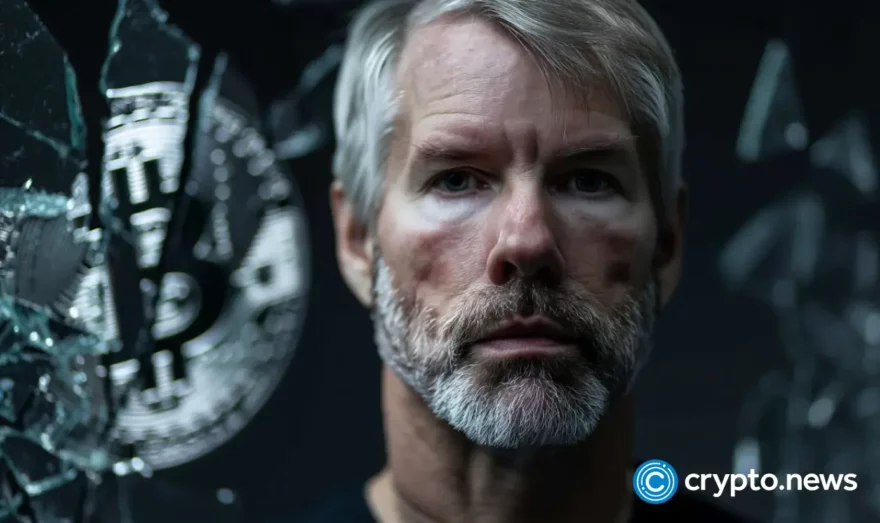CEO of Minima on the next frontier of DePIN

DePIN has become the latest buzzword in decentralized space due to its limitless potential to revolutionize how we access real-world services. The use cases for the tech are vast, covering a lot of sectors, from wireless connectivity to data storage.
Crypto.news recently spoke with Hugo Feiler, CEO and co-founder of Minima, a layer1 blockchain, regarding the onset of decentralized physical infrastructure networks (DePINs) and where this burgeoning sector is headed next.
With DePIN’s market cap reaching $20 billion and around 650 new projects launched, what innovations do you believe are driving this expansion, and how are you seeing projects diversify applications across Wi-Fi, transportation, and energy?
DePIN’s rise is marked by substantial market growth and the initiation of numerous projects. The groundwork for these developments was laid by earlier blockchain platforms like IOTA and subsequent initiatives like Helium and Filecoin, which have expanded the blockchain’s scope to various physical devices and data storage solutions. The evolving DePIN ecosystem is facilitating more efficient and transparent infrastructure systems, enhancing autonomous decision-making, and improving machine-to-machine interactions that enable advancements in AI, telecommunications, transportation, and IoT.
Infrastructure is something that can be bogged down by regulation. How do DePins account for that?
As regulatory frameworks evolve to support the decentralized paradigm, we can expect a more harmonious relationship between technology providers, users, and governing bodies, with an emphasis on security, data sovereignty, and ethical standards. The next decade for DePIN holds not just technological growth but also the promise of a more equitable and participatory digital ecosystem.
How do you think DePIN’s efficiency, cost-effectiveness, and user empowerment compare with centralized models, particularly in disrupting sectors dominated by large corporations?
DePIN architectures outstrip centralized models in efficiency by eliminating intermediary layers thus reducing transaction times and costs. Its cost-effectiveness is enhanced by the peer-to-peer nature of transactions which cuts out traditional fees and the need for expensive infrastructure. In terms of user empowerment, DePIN affords individuals greater control over their data and the services they use, a stark contrast to the user-as-a-product paradigm often seen in corporate-dominated sectors.
What main challenges do you think hinder DePIN adoption and scalability and what solutions are proposed for broader implementation?
The main challenges hindering DePIN adoption and scalability include the complexity of blockchain technology, which can intimidate users and developers, and the issue of interoperability, as different DePIN systems need to communicate effectively. Simplifying user interfaces and offering education on the technology are key to mitigating these complexities. Developing universal standards and open protocols is essential for achieving interoperability across platforms.
How do issues of interoperability intersect with regulatory issues?
To support decentralized infrastructures on a global scale, harmonized international regulations are crucial. This could involve the establishment of global standards for decentralized technologies (such as W3C for decentralized IDs) that would allow for interoperability and mutual recognition across borders. Additionally, the development of clear guidelines for the issuance and trading of digital assets, smart contract protocols, and consumer protection in the context of DePIN is essential. Creating regulatory sandboxes allows DePIN projects to test new products and services in a controlled environment with regulatory oversight, fostering innovation while ensuring consumer protection. Lastly, there’s a need for public-private partnerships to further understand the potential and limitations of DePIN, ensuring regulations support innovation without stifling it.
As DePIN enters domains like cloud computing and wireless connectivity, what strategies do you think could help compete against and capture market share from Big Tech?
As DePIN ventures into areas traditionally dominated by Big Tech, like cloud computing and wireless connectivity, a strategic approach focused on niche markets that do not necessitate massive centralized infrastructure can be advantageous.
Such as how?
Building community-based networks, like Helium or Wicrypt, can provide local, decentralized wireless connectivity, leveraging community management and ownership as a differentiator. Also via cost-effective solutions, such can offer more cost-effective computing or storage solutions than Big Tech can be a key strategy, particularly in emerging markets or for SMBs/SMEs that may not require large-scale infrastructure. Also by looking at innovative business models, such as decentralized autonomous organizations (DAOs) that can attract users looking for alternatives to the centralized corporate governance of Big Tech.
And how about security versus cost-efficiency, what can DePIN offer that traditional systems of infrastructure cannot?
DePIN’s attributes of censorship resistance and cost-efficiency position it as a compelling alternative in the cloud computing market. By offering secure, user-controlled environments free from monopolistic control, DePIN appeals to privacy-conscious users and cost-sensitive enterprises. This is a competitive edge that could drive a shift in market dynamics, fostering a more balanced ecosystem where decentralized and centralized services coexist, catering to diverse needs and potentially prompting innovation among traditional providers to retain market share.
Considering DePIN projects like Minima claiming even small devices can run a node, how do you see decentralized networks transforming the IoT landscape and possibly other sectors by 2030?
By 2030, decentralized networks like those used in DePIN projects could profoundly transform the IoT landscape. By enabling small devices to run full nodes, Minima could catalyze a revolutionary expansion of the IoT ecosystem. For enterprises, this equates to creating highly robust and secure networks for operations management. Smart factories could operate on an interconnected system where machines negotiate maintenance and supply needs autonomously, leading to dramatic improvements in efficiency and reductions in downtime. Also communities stand to benefit significantly as Minima facilitates the creation of decentralized services that are locally governed and maintained. For example, neighborhood-based microgrids could autonomously manage and distribute energy based on real-time demand and supply, optimizing community resource use and potentially lowering costs. In agriculture, for instance, sensor nodes across farms could provide precise data that enable farmers to engage in smart contracts for automated, data-driven crop insurance.

















